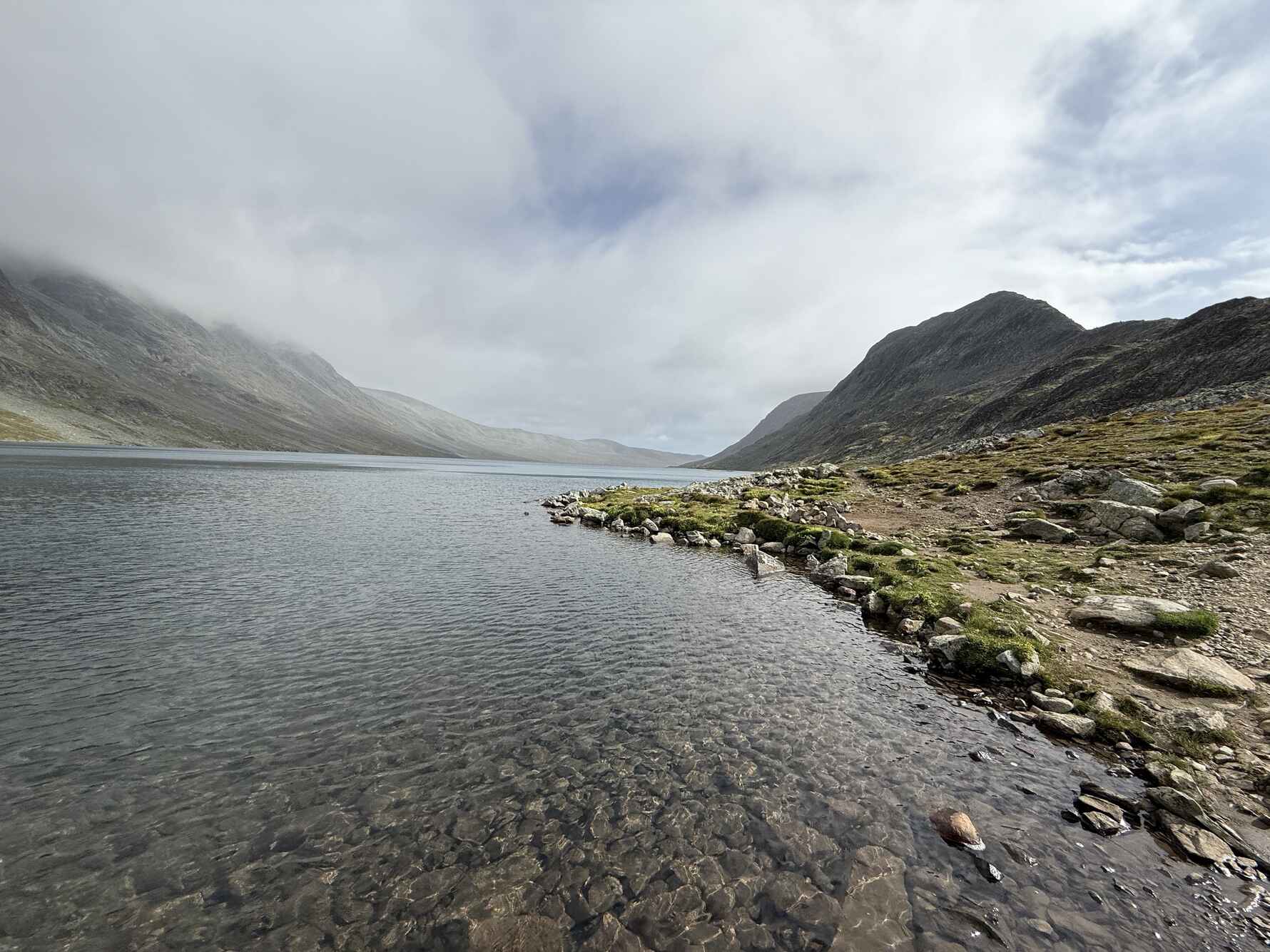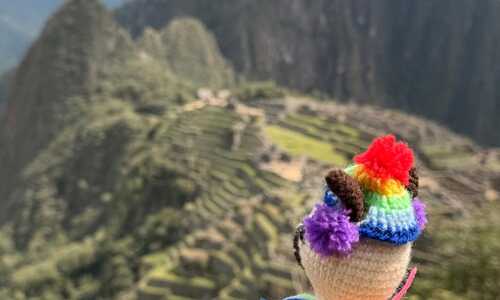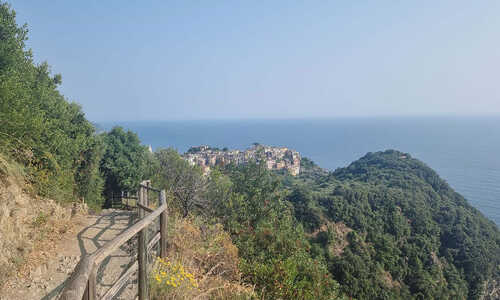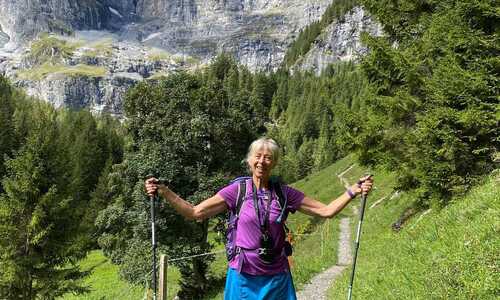15/08/2025
Exploring the Wild Heart of Norway: A Summer Recce in the Jotunheim National Park
There is a particular thrill reserved for those who set out not just to hike, but to explore, a reconnaissance, a journey observing, and planning. After my visit to the region in April on nordic skis, I needed to return to see what the Jotunheim in summer had to offer, I was not dissapointed. Norway’s “Home of the Giants,” was exactly that & was totally unforgettable.
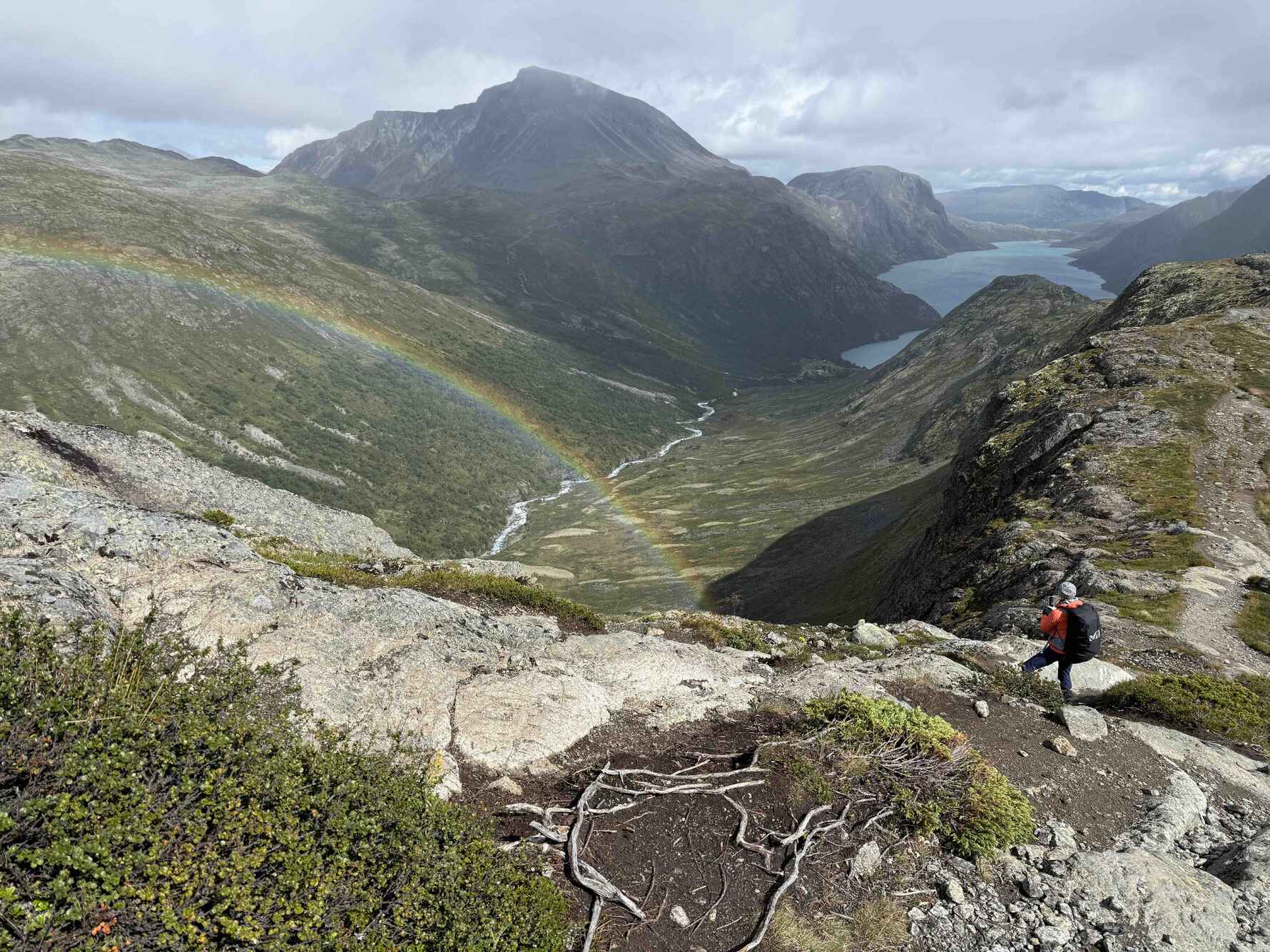
Why Jotunheim?
Jotunheimen, stretching across central southern Norway, is an epic landscape of towering peaks, deep glacial valleys, and myth-soaked wildness. The region’s name itself invokes Norse legend, speaking of giants and gods, and for modern adventurers, it offers some of the most dramatic scenery in Scandinavia. As I prepared for next year's group tour, a summer recce was essential: I wanted to ensure the route’s safety, gauge the challenge level, and uncover hidden gems to share with my fellow hikers.
Planning and Preparation
A recce is just as much about anticipation as it is about execution. Before heading out on the trails, I spent a good deal of time studying maps and guidebooks. Jotunheimen’s weather is notoriously unpredictable, even in summer, sunshine can often give way to wind, rain and snow. Packing for every eventuality, my kit included waterproofs, warm layers, good sturdy boots, gaiters, thermal layers and more.
Route selection was key. I focused on the classic Tour of the Jotunheim trail, there are many variations and start points, I decided to start and finish in Bessheim and do the route in reverse to what I did back in April on skis. The difference this time would be to include sections of the route that could not be acessed on Nordic skis, Besseggen Ridge and the Galdhøpiggen summit. Each would offer insights into terrain difficulty, possible hazards, and, most importantly, moments of breathtaking beauty.
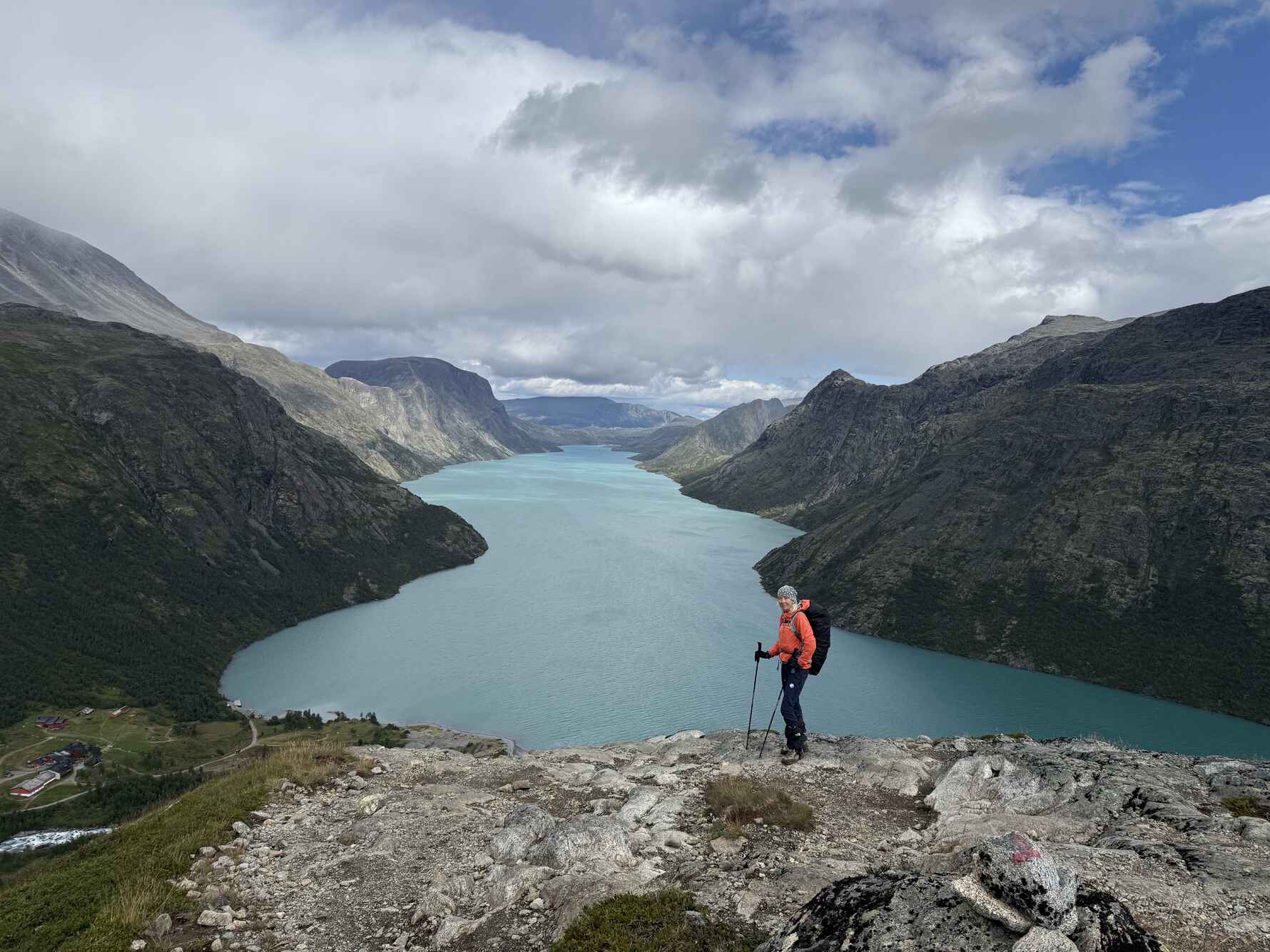
Arrival
I was joined by my good friend Sauze who has accompanied me on many a recce over the years. We arrived at Oslo Airport and took the train to Otta, from there, a one-hour taxi ride brought us to Bessheim Lodge, a perfect base to get organised for the days ahead. The lodge offers private rooms, a sauna, Wi-Fi, and a fabulous restaurant. That evening’s dinner was outstanding: a three-course feast of Norwegian specialities, smoked salmon salad, locally caught fish from the lake, and a delicious dessert.
Day 1: Bessheim to Glitterheim
After an early start and a hearty breakfast, we set off. The forecast promised a wet day, so we came prepared. An initial climb from Bessheim took us onto a high plateau Bessfjellet, followed by a gentle descent to the shores of Russvatnet. We paused for elevenses, sheltering beside old crofters’ cottages nestled by the water. Refuelled, we continued along a trail contouring the lake before beginning a steady climb to Hestlaegerhøe. From the pass, the path descended to the Glitterheim DNT hut, where we received a warm welcome. With excellent drying facilities, private rooms, a cosy lounge, and hearty food, it was the perfect end to a damp but rewarding first day.
Day 2: Glitterheim to Spiterstulen
The day was dry but with strong winds forecast. We opted for the lower route to Spiterstulen instead of summiting Glittertind. The trail followed the Veodalen to the high plateau of Skautflye, offering varied terrain, easy paths, boulder fields, and several river crossings. Once across the plateau, we began a steep descent into the Visdalen and reached Spiterstulen, our comfortable base for the next two nights.

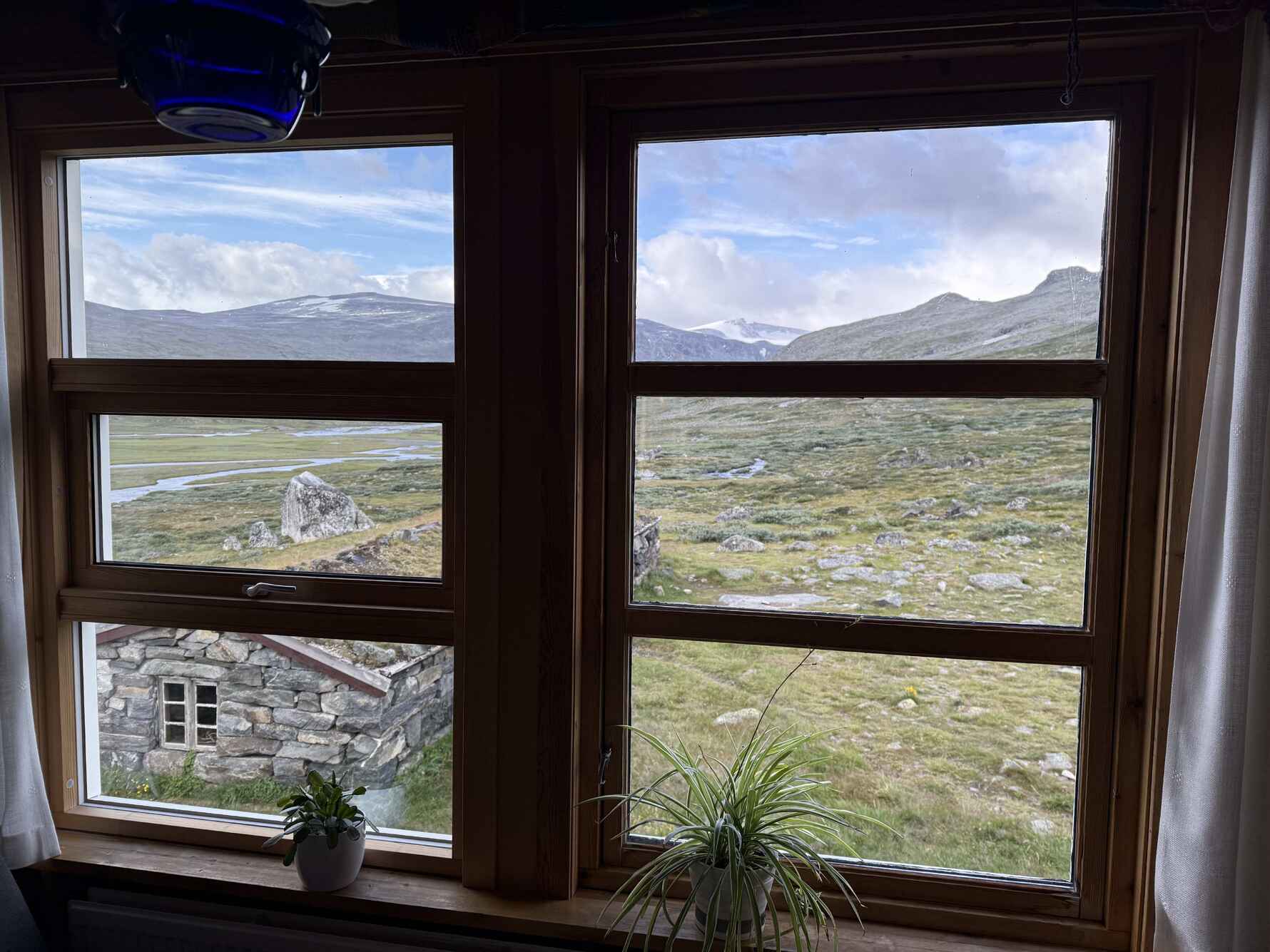
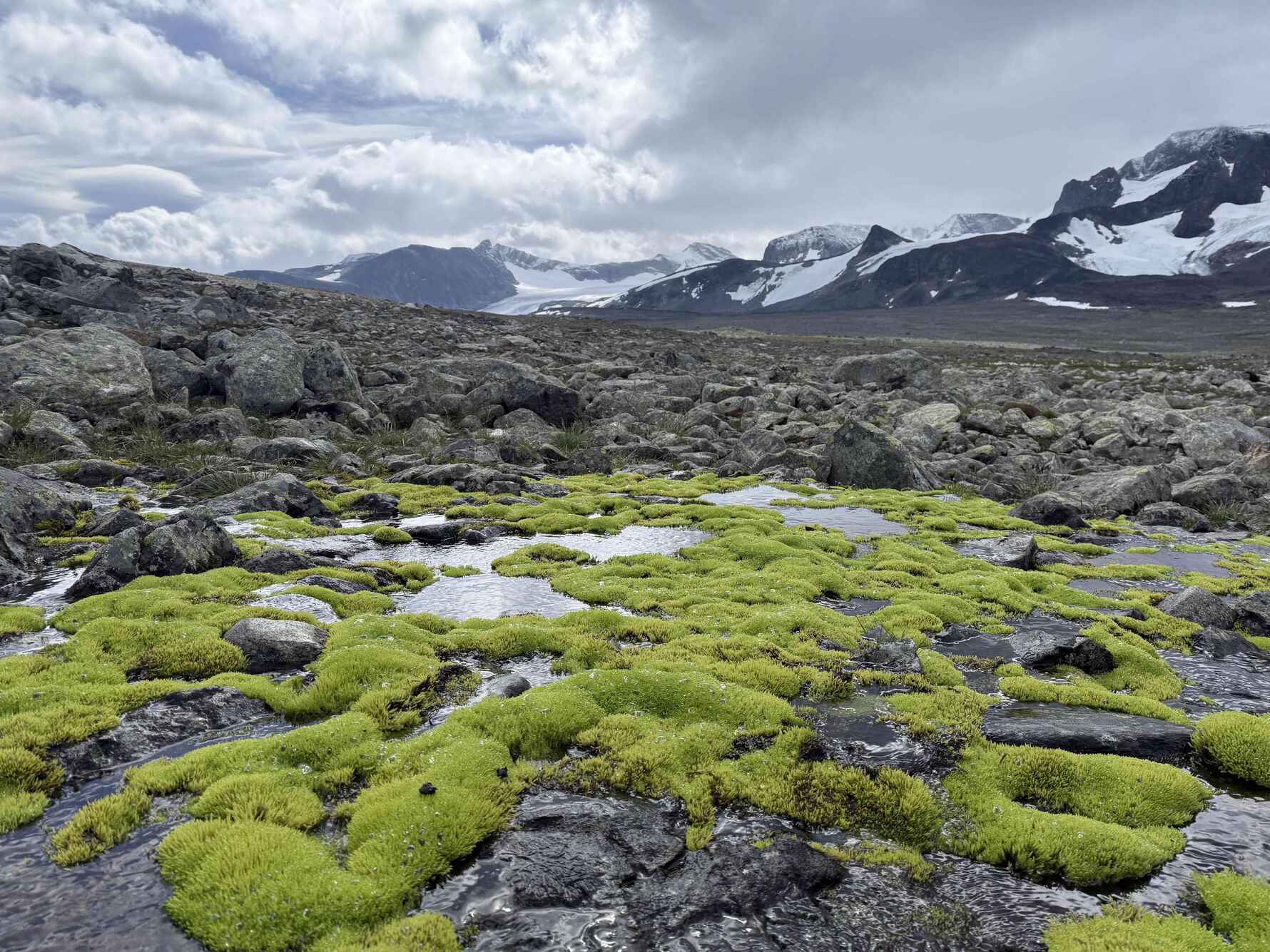
Day 3: Summit Day – Galdhøpiggen, Norway’s Highest Mountain
With a favourable weather forecast, we set out early for our summit bid on Galdhøpiggen 2469m. The day proved full of surprises, steep, challenging terrain combined with snow and ice above 1,800 metres made for an adventurous ascent. After just over four hours, we stood on the summit. The views were nothing short of spectacular. From our lofty perch, we could take in the full grandeur of the Jotunheimen, ancient peaks, vast glaciers and deep valleys stretching far into the horizon. The challenge wasn’t over, though. The long descent back to Spiterstulen tested weary legs, but the sense of achievement carried us through.
Day 4: Spiterstulen to Leirvassbu
On paper, this looked like a relatively easy day. In reality, the weather had other ideas. Un-expected rain turned our gradual ascent of the Visdalen into a wet, hard slog. River crossings and slippery boulder fields slowed our progress, and the mist shrouded much of the scenery. Eventually, we reached the mountain pass tucked beneath Kyrkja, and from there the Leirvassbu hut came into view. We arrived with wet boots and a deep appreciation for a hot shower and dry cosy clothes. Leirvassbu proved to be an excellent DNT hut, friendly staff, private rooms, a welcoming lounge, and hearty, satisfying food.
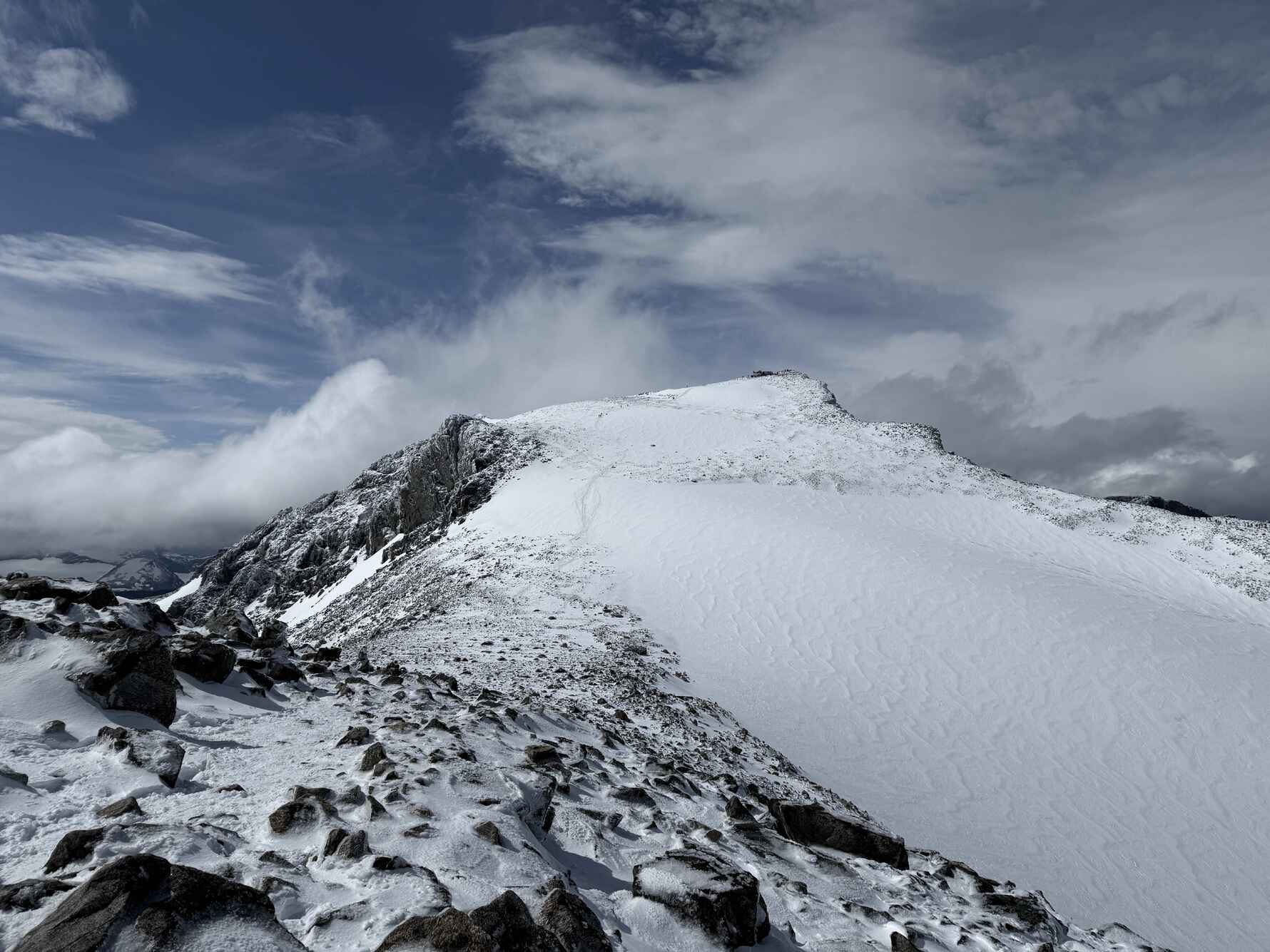
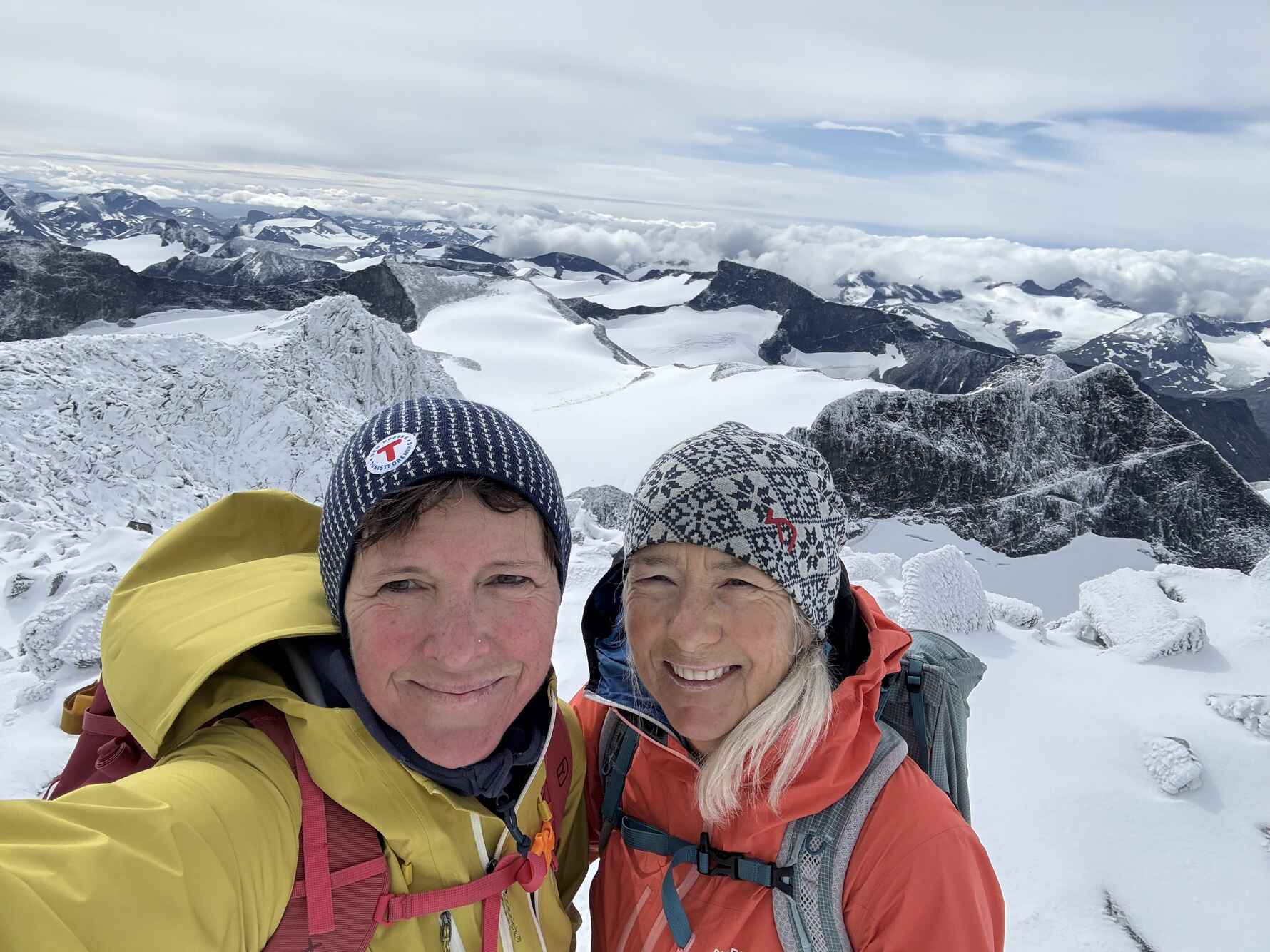
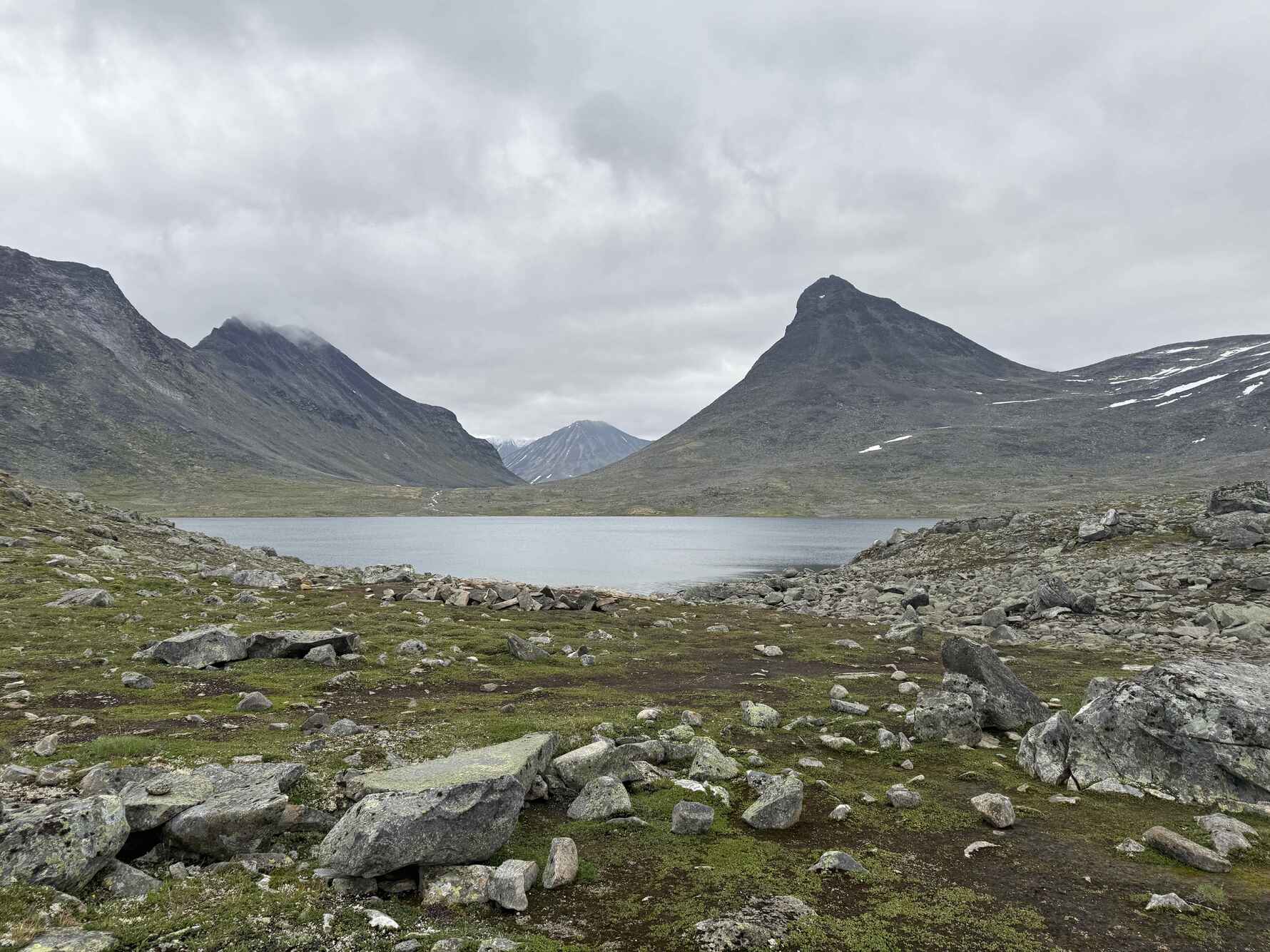

Day 5: Leirvassbu to Gjendebu
This was an exciting day for us, uncharted territory. It was the first time we had been on this section of the Jotunheimen trail.
A short ascent brought us to Høgvaglen Pass (1,518 m), a small saddle above the serene Leirvatnet Lake. From there, it was all downhill, gentle, scenic walking that made for a relaxed pace. We skirted the edge of the beautiful Lagvassbua Lake, its calm waters reflecting the surrounding peaks. At its far end, the trail steepened, descending towards Hellerjønne Lake, where a dramatic waterfall cascades into the Storådalen Valley. The final stretch led us through woodland along the Storåe River, emerging at the Gjendebu DNT hut, perfectly situated on the shores of Lake Gjende.
Gjendebu DNT hut is a great place to stay the night, very cosy and comfortable, private rooms and good food.
Day 6: Gjendebu to Memurubu
When trekking in Norway, expect the unexpected! I hadn’t done much research for this stage, so we set off without clear expectations, only to be completely blown away.
There are two ways to reach the Memurutunga Ridge:
Retrace your steps into the Storådalen Valley and take the trail from the Storådalshytta cabin.
For those who don’t mind steep, and I mean steep, plus a bit of scrambling, follow the shoreline east from Gjendebu before heading directly up to the ridge.
We chose the direct option!
Leaving the shoreline, the trail climbed sharply into the rock band. Sections of chain provided a welcome handhold during the steepest parts. By the time we reached the ridge, we were slightly exhausted and very ready for a break. The views from this lofty perch were nothing short of spectacular. From here, the trail just kept delivering, rolling ridge walking, alpine flora, glimpses of wildlife, and jaw-dropping scenery at every turn. Eventually, we reached the end of the ridge and began the steep descent to the Memurubu DNT hut. With its excellent private rooms, cosy atmosphere, and hearty food, it was the perfect place to rest after such an unforgettable day.
Day 7: Memurubu to Gjendesheim and the Besseggen Ridge
No recce of Jotunheimen would be complete without the Besseggen. This iconic ridge walk is famed for its ridge traverse between the emerald Gjende and deep blue Bessvatnet lakes. Early the next morning, we stet out from the hut before the first boat from Gjendesheim and the arrival of the day hikers. The ascent was steep, demanding careful footwork and occasional scrambling. At times, the drop-off to the water below was exhilarating. Reaching the top of the ridge was rewarded with a panorama that seemed almost unreal. The two lakes shimmered side by side, separated by the narrow spine of the ridge. Truly spectacular!

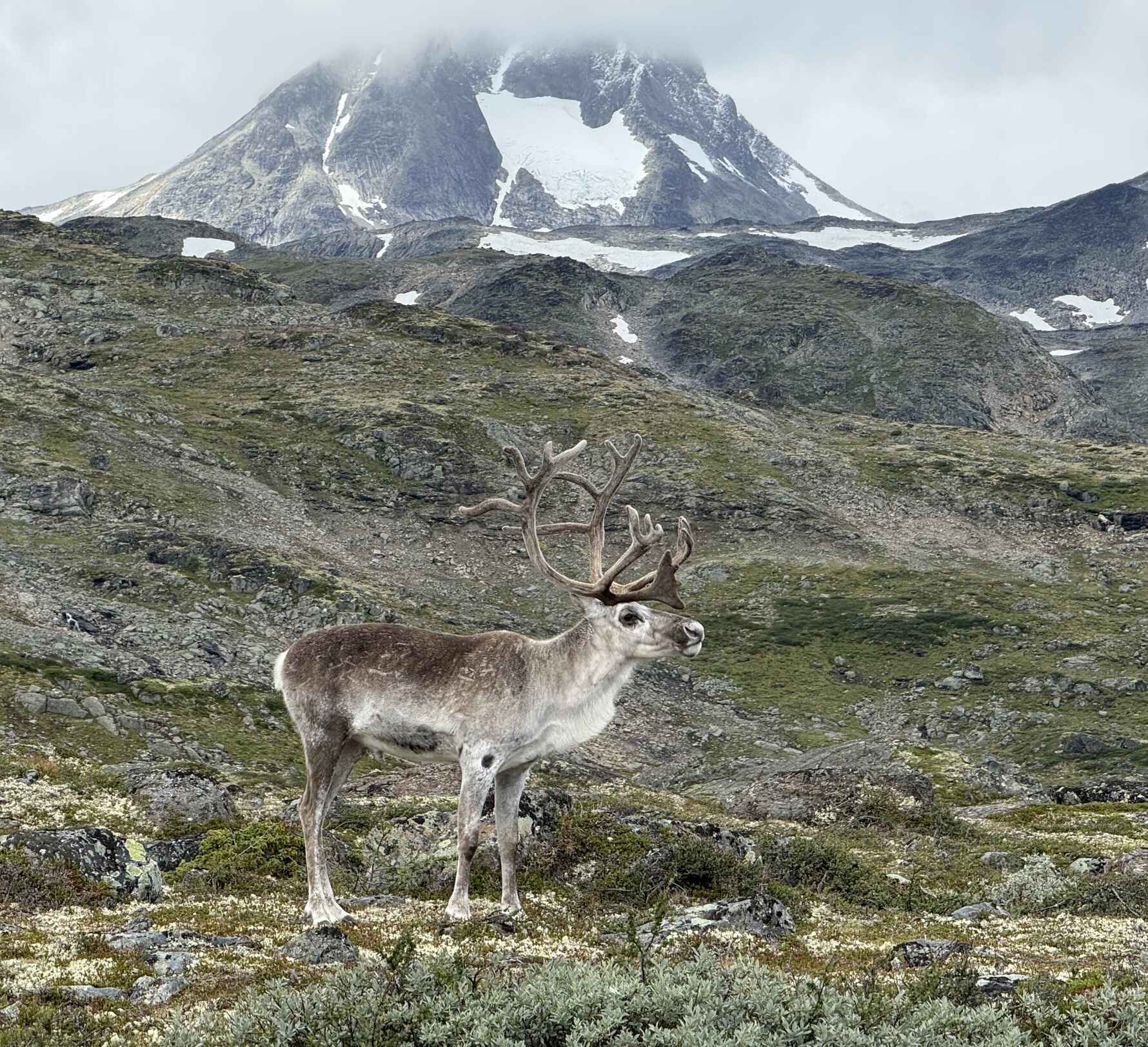
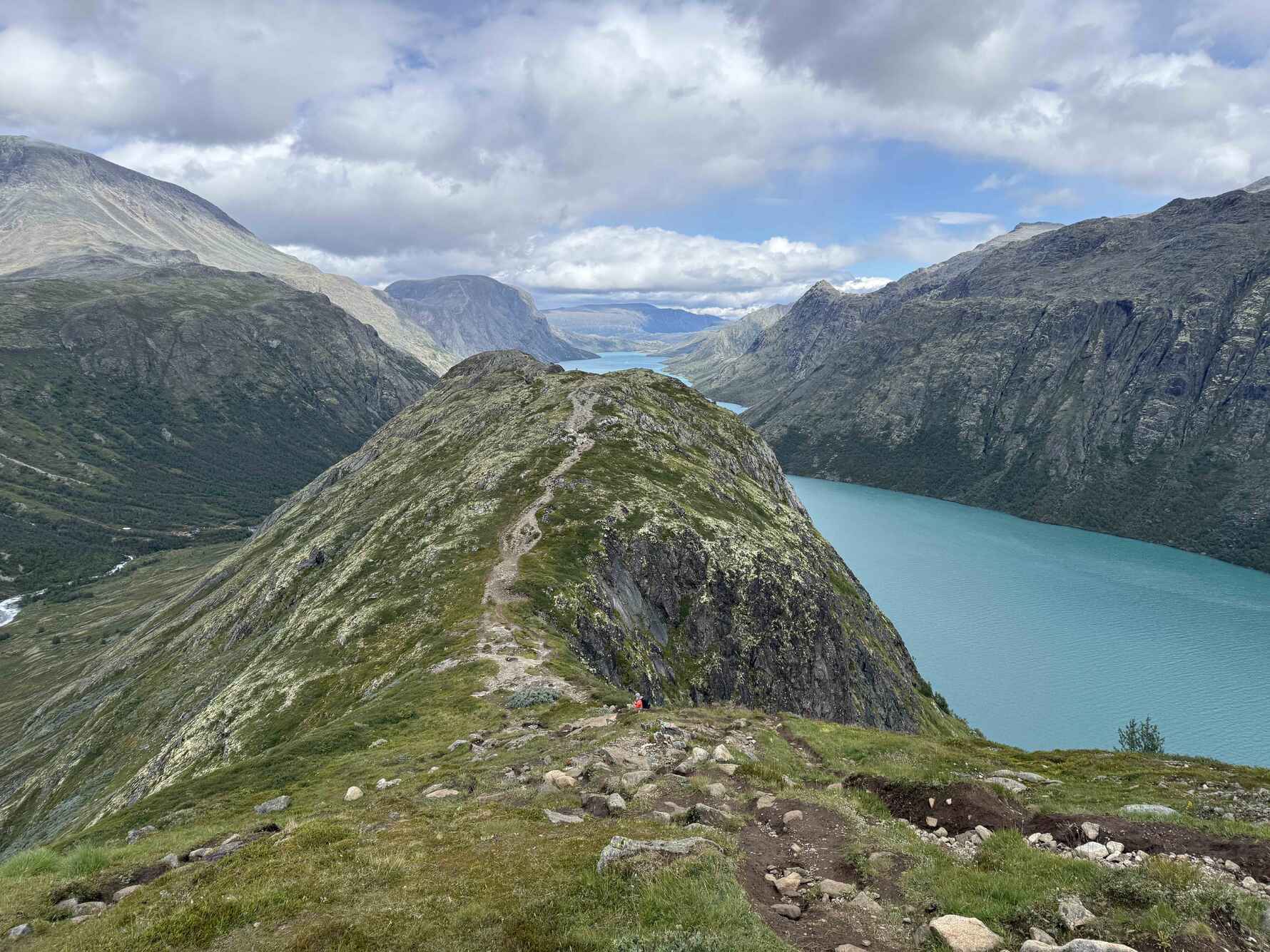
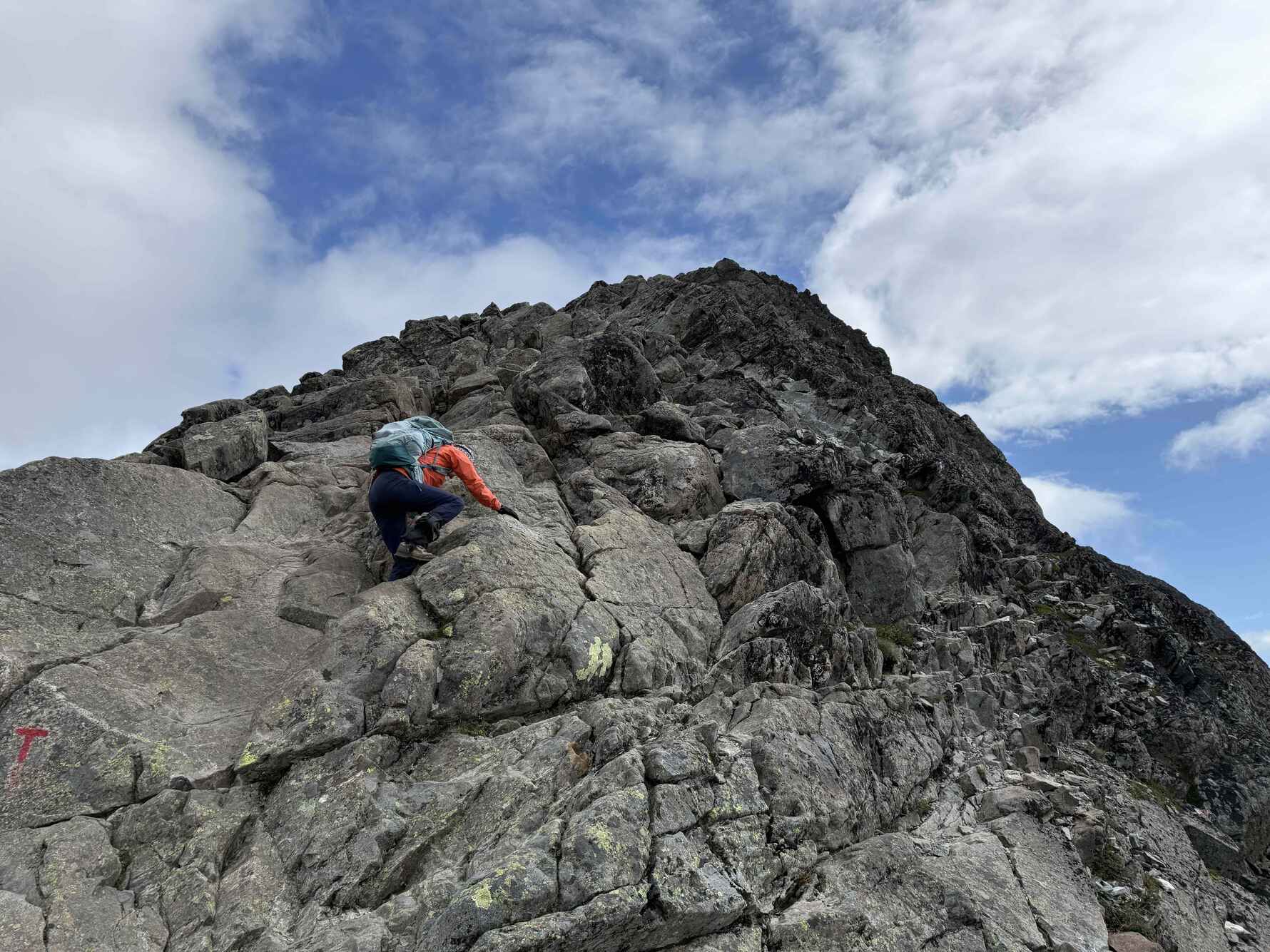
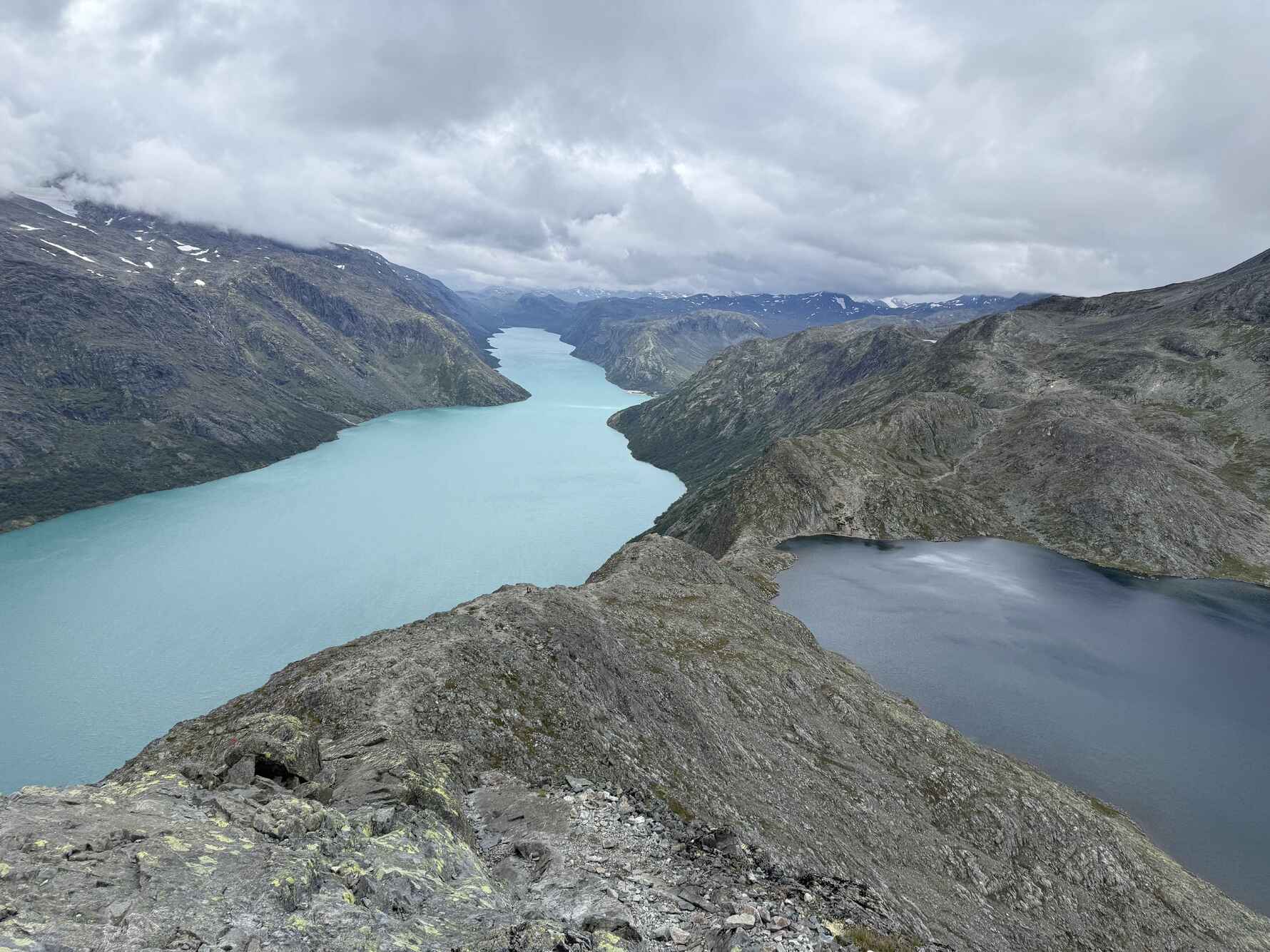
Looking Forward: Sharing the Journey
If you’re considering a trek in Jotunheimen, prepare for the unexpected and welcome it. The mountains will test you, but they will also inspire you in ways no guidebook can predict. From the windswept ridges to the silent forests, the experience and challenge is one of connection: to nature, to history and of course, to yourself.
The Giants of Norway await!
